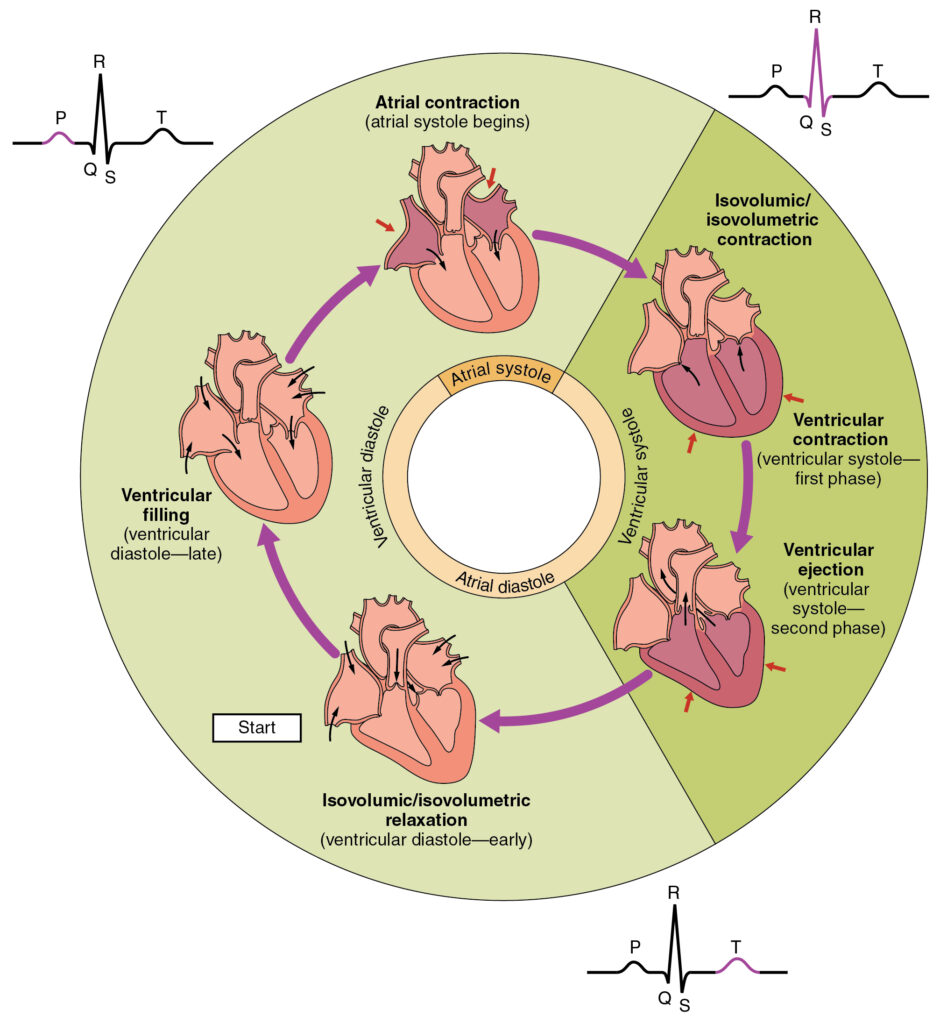Hearts are muscle organs about the size of a fist. However it circulates blood via a series of connections between veins and arteries, also known as the cardiovascular system. It is a part of the pulmonary and systemic circulation.
Table of Contents
Meaning
Diagram
Physiology
Phases
Duration
Definition
Most importantly “Cardiac cycle refers to the sequence of events that take place when the heartbeats.”

What exactly is the Cardiac Cycle?
The cardiac cycle refers to the complete heartbeat that occurs beginning with its creation until the subsequent beat. It is comprised of diastole as well as Systole and the time pause. The development of a cardiac cycle is illustrated with the heart rate, which is a natural indication by the number of beatings/minute. The human heart is healthy and beats at a rate of 72 times per minute, which means 72 cycles of the heart per minute. The cardiac cycle is full contraction, followed by relaxation ventricles and atria, and the process lasts for about 0.8 seconds.
Also, refer to Structure and Human Heart Functions Heart.
Cardiac Cycle Diagram
The diagram below illustrates the different phases of the cardiac cycle. However atrial Systole and the ventricular diastole, the ventral diastole, and ventricular Systole are clearly outlined in the diagram shown below.

Cardiac Cycle Physiology
The human heart comprises four chambers, which include the right and left half. Two chambers on the upper side consist of right and left Atria. The lower two chambers contain left and right ventricles. The primary role that the ventricle has is the ability to move oxygenated blood via the pulmonary arterial system and the pulmonary trunk into the lung. The left ventricle pumps freshly oxygenated blood into the body via the aorta.
Cardiac Cycle Phases
Here are the different phases that happen during the cardiac cycle:
Atrial Diastole:
During this stage, the heart chambers are at peace. This happens when the aortic valve and the pulmonary arterial valves close and the valves for the atrioventricular open, creating chambers in the heart’s muscle to ease.
Atrial Systole
At this time, blood cells flow from the ventricle to the atrium and, at this point, the atrium contract.
Isovolumic Contraction
At this point, ventricles begin to contract. Atrioventricular and pulmonary arterial valves are closed. As a result their is no change in volume
Ventricular Ejection
Ventricles expand and open the aortic valve and the coronary artery close.
Isovolumic Relaxation
In this phase, Isovolumic Relaxation is impossible for blood to enter the ventricles. As a result, the pressure drops, and ventricles stop contracting, and they start to loosen. As a result, the pressure is in the aorta, the lung arterial artery and the aortic valve have closed.
Ventricular Filling Stage:
At the Ventricular Filling stage, blood flow from the atria into the ventricles. As a result it’s known as a single step (first and the second). Following that, three stages affect blood circulation towards the pulmonary artery via ventricles.
Also read: Cardiac Output
Time of Cardiac Cycle
In an average individual, the heartbeat is 72 beats per minute. Calculation of the time of one heart beat cycle is:
1/72 beats/minute=.0139 minutes/beat
In a heartbeat that is 72 beats per minute, the duration of each heartbeat cycle is 0.8 seconds.
The duration of various stages of the cardiac cycle are listed in the following table:
Systole of the atrial region: continues for around 0.1 seconds
Ventricular Systole: lasts for approximately 0.3 seconds
Diastole atrial: lasts for around 0.7 seconds
Ventricular diastole: lasts for approximately 0.5 seconds

